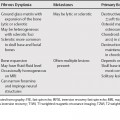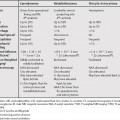78 A transient hepatic attenuation difference (THAD) or transient hepatic intensity difference (THID) is seen during biphasic liver computed tomography (CT) or magnetic resonance imaging (MRI). It refers to an area of nontumorous increased or decreased attenuation on arterial phase images, which becomes isoattenuating on portal-phase images. In most cases, the attenuation in a THAD is increased rather than decreased. Typically, the THAD has no mass effect with vessels coursing through the area, and a wedge-shaped appearance with straight margins. When encountering a THAD, the interpreter should search for an associated lesion (causing arterioportal shunting) deep to the THAD and portal vein obstruction. Portal vein obstruction results in increased compensatory arterial flow and decreased unopacified portal flow. A similar phenomenon is seen from hepatic parenchymal compression, which decreases portal flow. Interpretation of THADs in cirrhotic livers can be difficult as cirrhotic livers can contain small nontumorous arterioportal shunts, but also can develop hepatocellular carcinomas (HCC) with arterioportal shunts.1
Transient Hepatic Attenuation Difference
![]()
Stay updated, free articles. Join our Telegram channel

Full access? Get Clinical Tree





